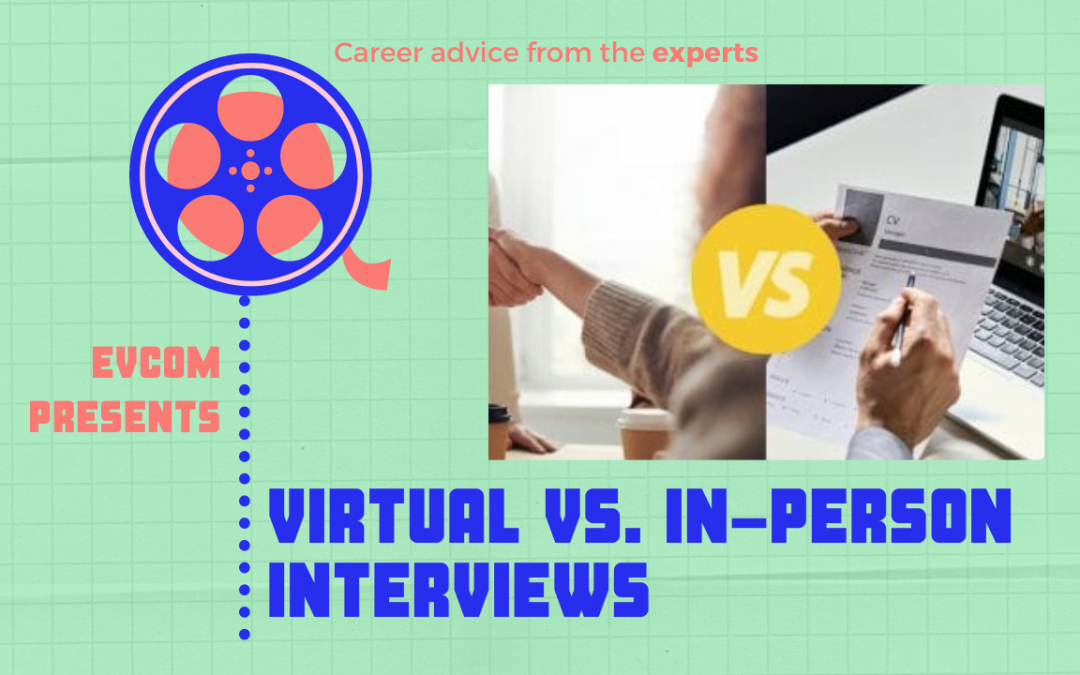By Searchlight
Virtual interviewing became essential in 2020 for most businesses when in-person interviews were suddenly stopped, due to several lockdowns and a work from home policy. These days Zoom/Ms Teams interviews have become commonplace with most first stage interviews continuing to be carried out this way.
Recruitment experts believe a combination of the two interviewing methods will be the way recruiting is carried out post-pandemic, as traditional hiring practices make a comeback alongside recently adopted practices.
Looking ahead, People Management reports that moving forward two-thirds of HR leaders plan to continue using virtual interviewing – now the pandemic has begun to subside. A study commissioned by HireVue, a video and interview and assessment provider, found that 23 per cent of respondents will move exclusively to virtual interviewing.
Forbes argues that virtual interviews are “here to stay” and “will continue to remain an option for talent acquisition, depending on the situation.”
The optimal interviewing method is often tied to the type of recruiting being done. Video interviewing is beneficial for high-volume recruiting, for example, or for roles that will be completely remote. “For senior roles, you may start out virtual, but at some point, you’d want to have in-person engagement. Hiring for a senior role is an investment, and you will want to meet the candidates to get a better gauge of their personality and working style.
The Benefits of Virtual:
Time-Saving:
Video interviewing can accelerate the hiring process. Setting up onsite interviews with candidates and hiring managers is a chore for recruiters and sometimes fraught with cancelled and rescheduled appointments (not that the same can’t be said for virtual interviews). If you begin the first stage with a one-way video interview, this allows a quick filter-out stage, and if you’re sitting on the fence with a candidate it lets you revisit the videos.
Widens the Talent Pool:
Virtual interviewing allows for widening your talent pool. Your office location can deter candidates who live far away from applying, but a virtual interview means that neither you nor the candidate needs to travel for the meeting, and this opens up the possibility of hiring top talent from further afield. Also, applicants that are currently employed are more likely to find the time for a virtual interview, so this can boost the number of applications that you receive.
Logistics:
Virtual interviews have also alleviated many logistical problems that come with recruiting. Tiffany Ballve, a senior talent sourcing manager, leads a team that oversees interview events for engineers at Microsoft. “Before going virtual because of COVID-19, we were doing about 15 of these events per month, bringing in about 30 to 65 candidates per event, always in person, at the Seattle campus,” she explained. “We always had space and logistics limitations to interview that many candidates at the same time. Logistics kept us from scaling bigger. But moving to 100 per cent virtual removed those logistical complications, so now we’re running 30 to 35 events per month. We’re saving so much money not having to pay travel costs.”
Virtual interviews also allow more of the employer’s stakeholders to sit in on the interview from wherever they are around the world. Another bonus, recorded interviews can be reviewed by more team members on their schedules or used for training purposes for new hiring managers and recruiters.
You Can’t Beat Face to Face:
While many would argue that it is possible to build up rapport and a connection via virtual interviews, meeting a candidate in person offers the best opportunity for genuine engagement.
It is important to consider each role when deciding between face-to-face or virtual. For any job that requires strong social skills, such as client-facing or senior leadership roles, employers should at some point meet candidates face-to-face. In-person interviews offer a higher level of engagement. You can get a better read on body language and get a better sense of interpersonal skills. Interviewing for jobs that require skills demonstration would also benefit from in-person interviews.
Technology itself can be another obstacle to overcome with virtual interviewing. Technology can be notoriously unpredictable, often different platforms can come with a swathe of glitches. Calls can often cut out, there can be internet/bandwidth issues, video processing issues (stuttering) and camera/mic issues. All things which can heavily frustrate the process on both sides.
The advent of Zoom and MS Teams were intended for collaboration purposes rather than to interview. Certain improvements need to be made on these platforms to become a reliable recruitment tool.
The shared pandemic experience has brought about a newfound empathy among recruiters and hiring managers, but new biases may have also been born, such as judgment of a candidate’s ability to effectively do a video interview or judgment of a candidate’s home surroundings, referred to as “background bias.”
Final Thoughts
Looking to the future, it is clear the recruiting process has changed, and for the positive. Whilst stumbling blocks exist with the current technologies used. Candidates and employers are becoming accustomed to the new ways of interviewing, the benefits outweigh any drawbacks. Technology will improve, from the platforms used to interview, to the reliability of peoples connectivity.
However, this doesn’t mean the days of face-to-face interviews are over, far from it. There will always be a need for in-person contact, for roles where management, client relations or manual skill is involved. Face-to-face is the only way to truly gauge a person’s people skills and management style.
Each business will need to evaluate its own needs, evolve and embrace new ways of recruiting. An often overused term in a post-pandemic world, but relevant, a business will need to consider a “hybrid approach” to their recruitment process.
If you liked this article check out our guide to a successful virtual interview.
First published here.


